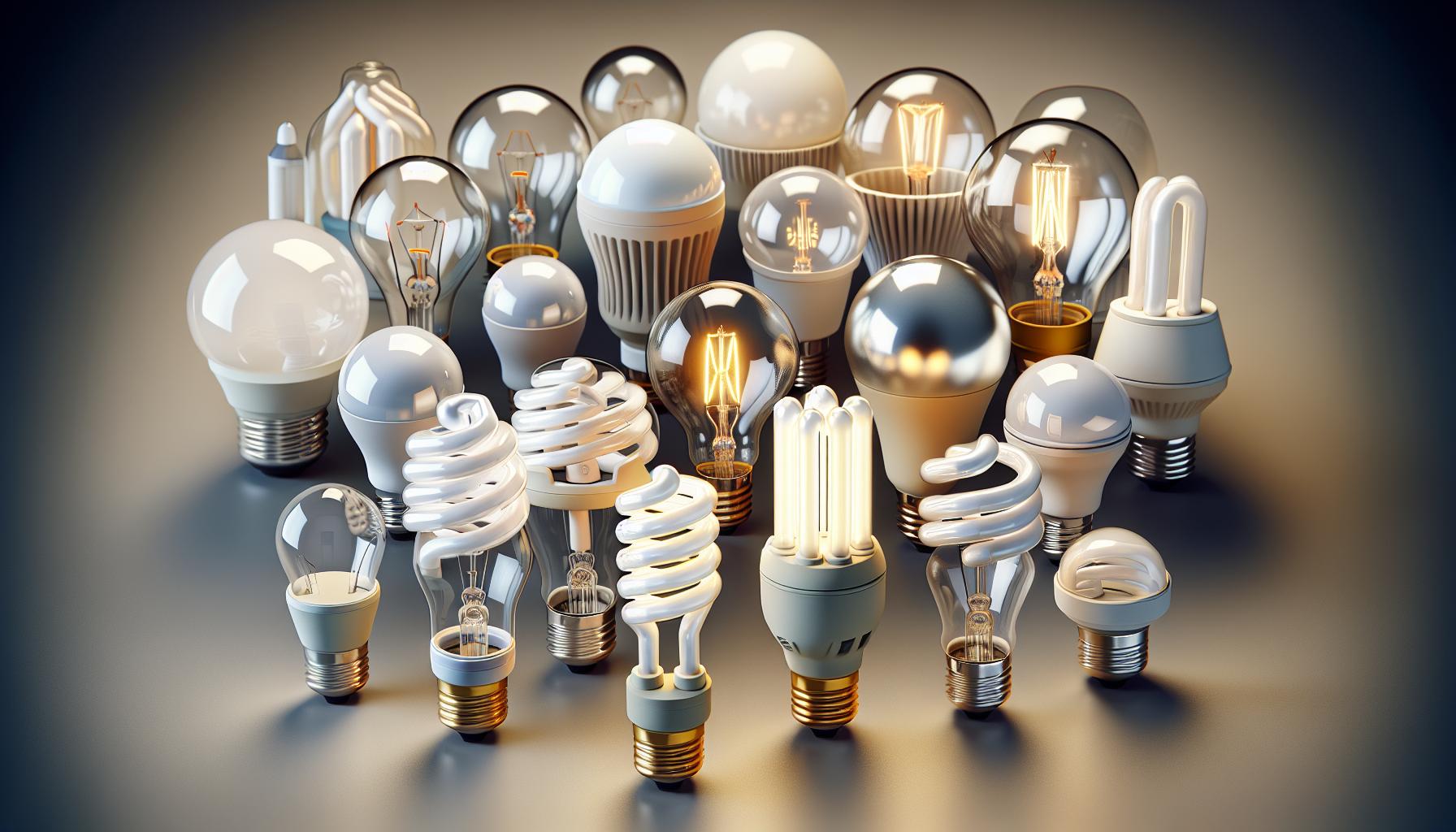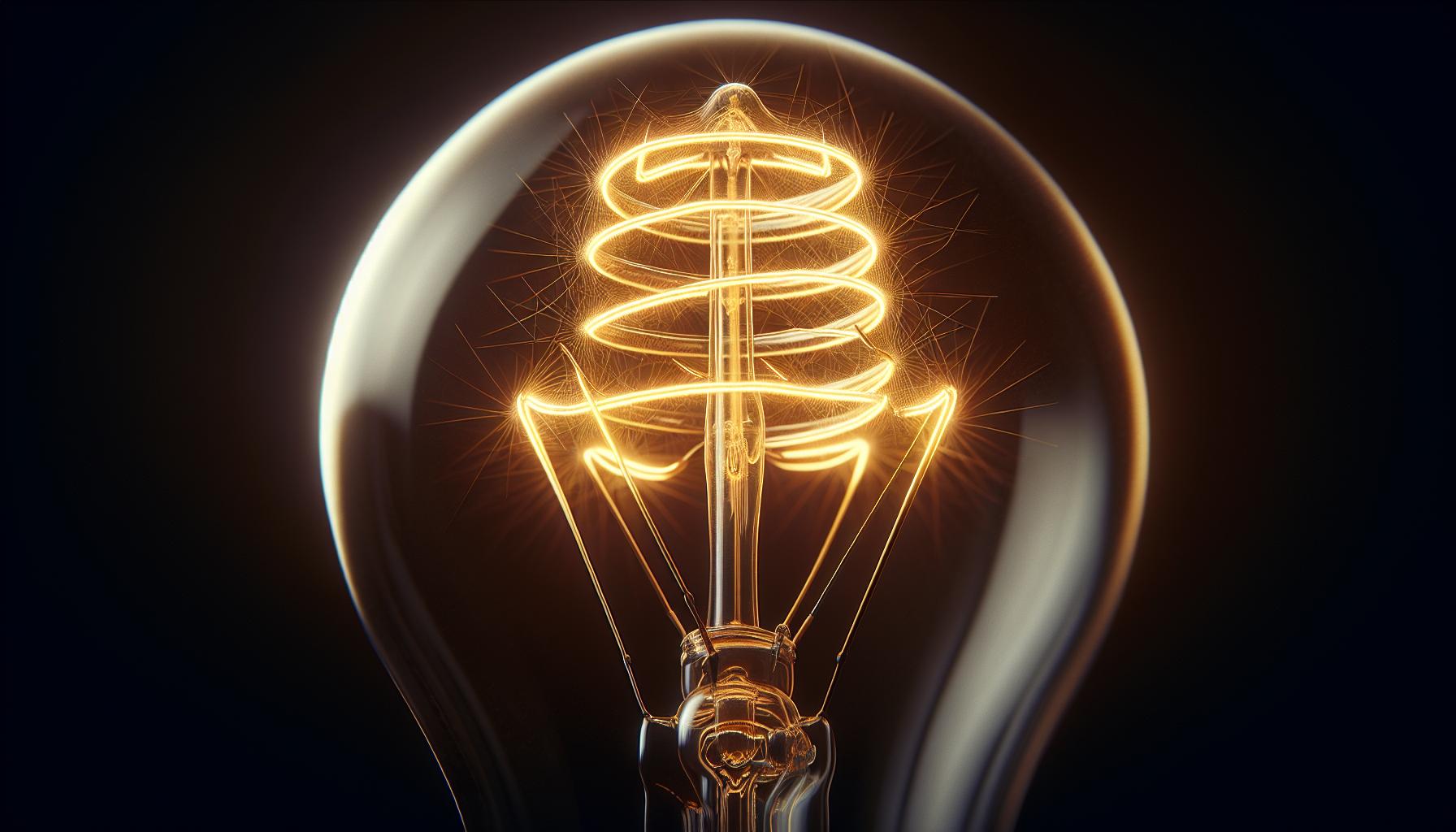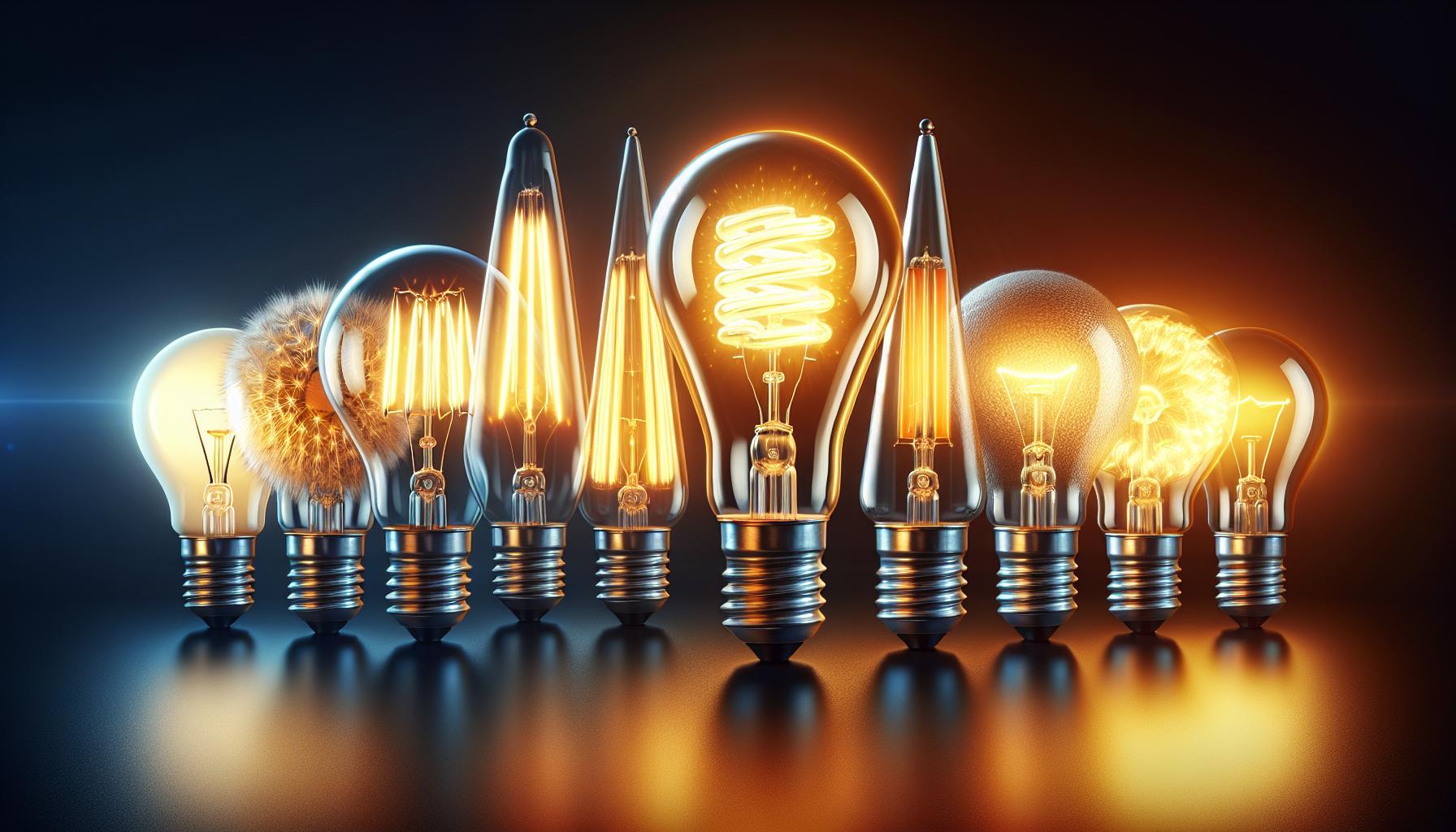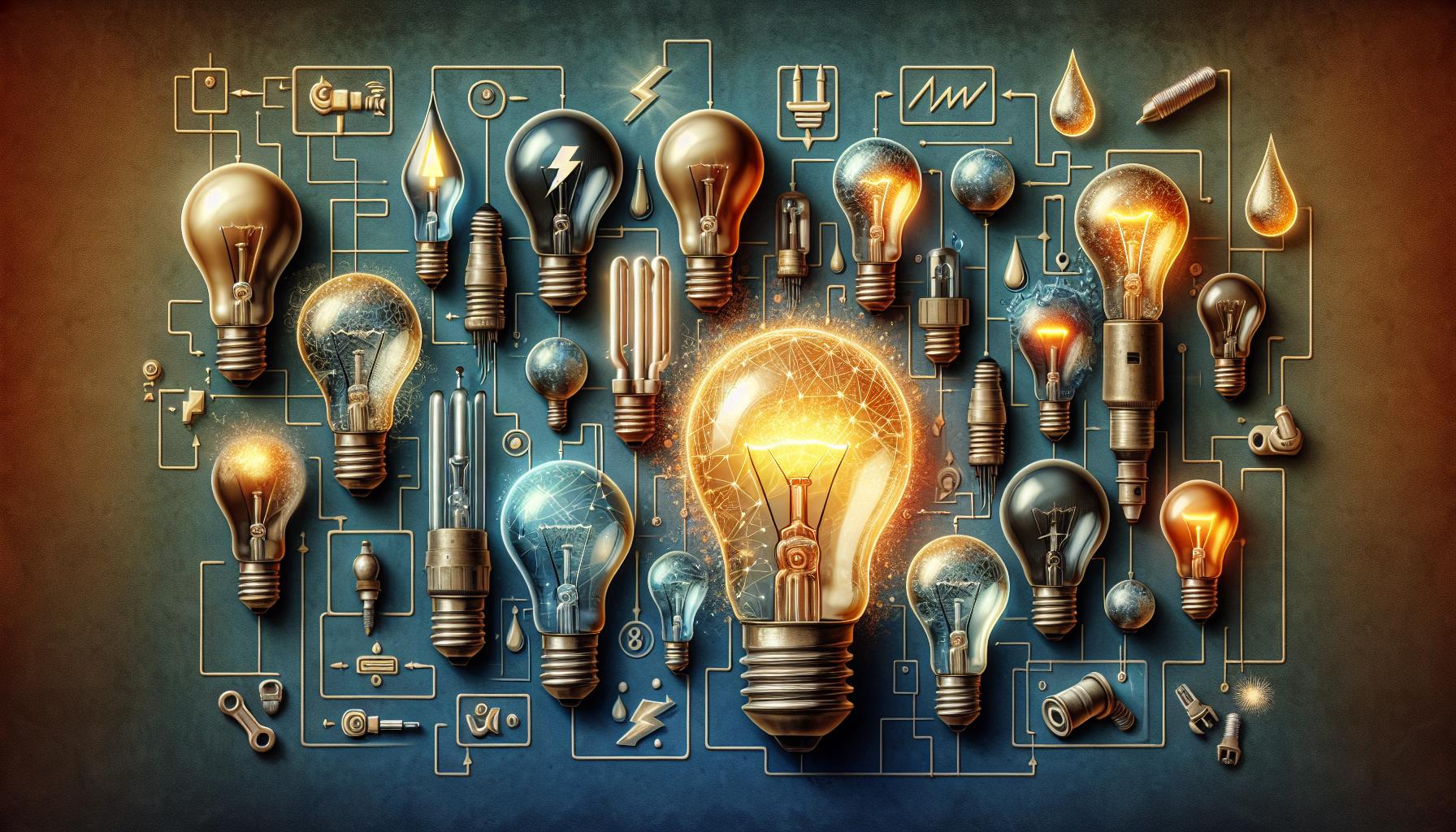Ever found yourself in the dark, quite literally, when a light bulb suddenly gives up the ghost? You’re not alone. It’s a universal annoyance, but there’s usually more to a burnt-out bulb than meets the eye.

Understanding why your trusty light source flickers out can save you from future frustration. It’s not just about the inconvenience; it’s about unraveling the little mysteries hanging from your ceiling.
From the inevitable wear and tear to the science behind the glass, let’s shed some light on the reasons your bulbs are bidding farewell. Ready for some enlightening insights? Let’s dive in.
Why Do Light Bulbs Stop Working?
When you’re knee-deep in a home DIY project, nothing halts your progress quite like a flickering or dead bulb. If a bulb has burned out, it’s telling its own story of demise, and your understanding of the narrative can save you from future lighting interruptions.
Electrical Surges are one of the chief causes of light bulb failures. They occur when something disrupts the regular flow of electricity, often from lightning strikes or power outages. Electrical components inside the bulb can’t handle these sudden jolts of power, leading to a shortened lifespan.
Then there’s the issue of bulb wattage. If you’ve installed a light bulb that exceeds the recommended wattage for your lamp or fixture, it could be a ticking time bomb. High wattage bulbs produce more heat, and too much heat can damage the bulb’s filament or the fixture’s wiring. Always match the bulb to the fixture’s recommendations to prevent premature burnouts.
Consider the bulb’s on-off cycling as well. Frequent switches on and off can wear down a bulb faster, especially if it’s not designed for high traffic use. Some bulbs, like those designed for closets or hallways, are built to withstand this kind of usage, but your average bulb may not be up for the task.
Don’t overlook loose connections. A bulb that isn’t screwed in tightly can lead to inconsistent electrical contact and cause flickering, not unlike a poor connection in your favorite tech gadget. Make sure your bulbs are secure in their sockets—firm, but without over-tightening, which can lead to breakage.
Lastly, the environment plays a role too. Excessive vibration from nearby machinery, frequent movement, or even loud sound can rattle the delicate filaments within a bulb. External conditions like humidity or temperature extremes can also push a bulb beyond its limits.
Arming yourself with this knowledge can make troubleshooting as straightforward as flipping a switch. And when you next stand in the lighting aisle pondering the arrays of LEDs, CFLs, and halogens, you’ll be better equipped to make choices that extend the life of your bulbs. Keep your home bright and your projects uninterrupted with a little light bulb savvy.
Understanding Light Bulb Lifespan

As someone who’s delved deep into the world of illuminating spaces, you know that the lifespan of a light bulb is a key factor in your home DIY lighting projects. But what exactly determines how long your bulbs will last? It’s not just about a bulb’s rated hours; it’s the symphony of usage, quality, and environmental conditions that plays the decisive tune.
First, consider the type of light bulb you’re using. LEDs, for instance, boast a significantly longer lifespan than their incandescent counterparts. Here’s a quick comparison of average rated lifespans:
| Bulb Type | Average Lifespan (Hours) |
|---|---|
| Incandescent | 750-2,000 |
| Halogen | 2,000-4,000 |
| CFL | 8,000-10,000 |
| LED | 15,000-50,000 |
The build quality of the bulb also plays a huge role. Cheaper bulbs might be tempting, but they often fail earlier due to subpar materials or manufacturing defects. It’s worth investing in reputable brands for something as essential as lighting.
Then there’s the way you use your bulbs. Frequent switching on and off can shorten a bulb’s life due to the thermal stress it experiences. Aim for steady usage, and consider dimmers for areas where you desire varying light levels without the strain of full on-off cycles.
« How to Use Rechargeable Light Bulbs: Tips for Longevity & Performance
Why Would a Light Bulb Explode? Surprising Causes Revealed »
Environmental conditions such as moisture or enclosed fixtures can affect bulb performance too. A well-ventilated area around the bulb keeps it cool, staving off overheating that could lead to premature failure.
Each light bulb’s journey is unique and understanding these nuances can be both a practical skill and a charming quirk of your DIY lighting passion. Just remember, a little knowledge and careful consideration can shed years of light in your home spaces.
The Role of Filaments in Light Bulbs

When you’re tackling a DIY project, it’s crucial to understand the heart of each component you’re working with. In the case of light bulbs, the filament is the centerpiece. This slender thread of material, typically made of tungsten, plays a pivotal role in the glow you admire in everything from cozy table lamps to brilliant chandeliers.
Filaments are subjected to intense heat when electricity courses through them. The high melting point of tungsten allows it to withstand these temperatures, but over time, the relentless heating and cooling cycle can take its toll. The filament becomes brittle and can eventually break, putting an end to the light bulb’s service.
Several factors affect the durability of a filament. It’s not just about turning a bulb on and off, but how you’re doing it. Fast, frequent cycling can cause more stress, leading to earlier failures. If you’ve got a light that you often flick on for brief spells, think about opting for a bulb better suited to that behavior, like an LED, which doesn’t rely on filament technology.
Additionally, manufacturing inconsistencies can introduce weak spots in a filament. Even if you’re using high-quality light bulbs, the manufacturing process isn’t perfect. Small imperfections in the filament can lead to reduced life expectancy of your bulb.
Remember, filaments don’t exist in isolation. Their environment has a prominent influence. If you’ve got bulbs in a moist environment or enclosed fixtures, you’re introducing additional stressors. Moisture can lead to corrosion, while a lack of proper ventilation in enclosed fixtures increases operating temperatures. These conditions can all expedite the deterioration of the delicate filament within.
Imagine the filament as the lifeline of your traditional bulb – it’s what stands between a brilliant beam and the darkness. Given their crucial role, it pays to choose the right bulb for the right setting and to understand just how these thin strands of tungsten keep our world illuminated.
The Effects of Heat on Light Bulbs

When you’re deep into your latest DIY project, you’ll want the light above your workbench to last. That’s why you should know how heat impacts the trusty bulbs lighting your space. As a light bulb heats up, several changes occur, with varying degrees on its performance and longevity.
Heat is both a friend and foe to your light bulb. On one hand, it’s necessary for light production, especially in incandescent bulbs where the filament must glow hot to illuminate. On the other hand, excess heat can spell disaster for the bulb’s lifespan.
In the insulated world of a light bulb, temperature regulation is key. Ideally, the bulb should stay within a certain temperature range. If it doesn’t, well, you might find yourself replacing them more often than you’d like. Let’s delve into why that happens:
- Thermal Expansion and Contraction: Every time you flick on the switch, the filament experiences thermal expansion, and with the inevitable switch off, it contracts. This cycle can cause material fatigue over time, leading to the eventual fail of the filament.
- Heat Dissipation Issues: Some bulbs, like halogens, run hot. If there’s not enough ventilation around, the trapped heat could reduce the bulb’s operational life. Always consider the fixture you’re using – does it allow for proper air flow?
- Energy Transfer Efficiency: Not all the energy a bulb consumes is turned into light; some of it becomes heat. The efficiency of this energy transfer defines how hot the bulb gets. LED bulbs, for instance, are much more efficient than their incandescent cousins, converting more energy into light and less into heat.
Bear in mind that managing heat isn’t just about prolonging the bulb’s life. It also influences energy consumption and cost. The cooler your bulbs run, the less energy they need, and the less you’ll spend on utilities. Next time you’re picking out bulbs for your home project, think about not just the lumens or the color temperature, but also how the bulb manages the heat it generates. It’s a small detail that can make a big difference in both the ambiance of your room and the longevity of the lighting you’ve chosen.
Common Causes of Light Bulb Failure

When you’re knee-deep in home DIY projects, one of the most frustrating hiccups is a light bulb that won’t cooperate. Being in the know about why light bulbs fail can save you time and hassle. Here are some typical culprits:
- Voltage fluctuations can be the bane of a light bulb’s existence. When the power supply is inconsistent, it wreaks havoc on your bulbs, causing them to burn out prematurely. Imagine a bulb enduring a daily workout far beyond its capacity. That’s exactly what happens when the voltage spikes.
- Loose connections might seem trivial but they’re a major offender. Whether it’s in the lamp holder or the wiring, a bulb that doesn’t sit tight is a bulb burning out ahead of its time. Each flicker essentially shortens its life span, like taking a chisel to its potential one chip at a time.
- Mechanical shock from bumps or vibrations, especially in high-traffic areas of your home, can dislodge or damage the delicate inner workings of a bulb. Think about those floor lamps in the game room or the ceiling fixture near the slamming door. They’re like the front line, taking the brunt of everyday activity.
- Environmental factors: High humidity, for instance, can corrode contacts and bases and excess moisture creeping in where it shouldn’t can spell an early end for otherwise robust lights.
Here are some key stats:
| Factor | Potential Impact on Bulb Life |
|---|---|
| Voltage Fluctuations | Up to 85% reduction |
| Loose Connections | Min. 30% fewer hours of light |
| Mechanical Shock | Cases vary widely |
| Environmental Conditions | Dependent on severity |
Next time you’re scouting for the perfect bulb, consider its environment and prep it for success. If your bulbs are giving up the ghost too soon, investigate these common issues. Ensure your fixtures are in tip-top shape to avoid sending yet another light bulb to an early grave. And of course, always opt for high-quality bulbs that can withstand a little extra strain—they might just be the MVP of your next home project.
Conclusion
You’ve seen how heat plays a pivotal role in the life of your light bulbs. It’s all about balance—too much heat can be just as detrimental as too little. Remember, when you’re picking out bulbs, think about how they handle heat. It’s not just about the immediate brightness but also about longevity and efficiency. Consider the environment and fixture conditions too; they’re key players in your bulb’s performance. With the right care and knowledge, you’ll not only light up your space but also do it smarter, saving energy and money in the long run. Keep these tips in mind and you’ll find your bulbs burning bright for many nights to come.
Frequently Asked Questions
What factors determine the lifespan of a light bulb?
The lifespan of a light bulb is influenced by heat management, voltage fluctuations, mechanical shocks, loose connections, and environmental conditions.
How does heat affect light bulb longevity?
Excess heat shortens a light bulb’s lifespan by causing thermal expansion and contraction of the filament, leading to quicker degradation. Efficient heat dissipation and energy transfer are crucial for longevity.
Is managing heat important for light bulbs?
Yes, managing heat is essential for prolonging the life of light bulbs, reducing energy consumption, and decreasing associated costs.
Can the environment cause light bulb failure?
Environmental factors such as extreme temperatures, humidity, and exposure to volatile chemicals can cause premature light bulb failure.
What should be considered when choosing light bulbs for home projects?
When selecting light bulbs, consider how well the bulb manages heat to ensure a longer lifespan and improved energy efficiency. Also, evaluate the bulb’s suitability for the intended environment and fixture compatibility.




